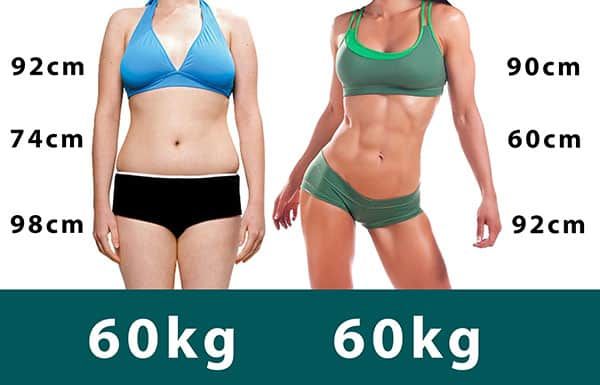Losing weight can be a tricky journey to embark on, and understanding how your body composition affects it can be the difference between achieving your goal or feeling frustrated with your progress.
So, let’s talk about the differences between fat and muscle and how they impact your weight loss journey.
First, let's define what fat and muscle are. Fat is an adipose tissue that stores excess energy and serves as a fuel reserve. Muscle, on the other hand, is a type of tissue responsible for body movement and energy consumption.
Now, why does body weight matter? Even if you have two people who weigh the same, they can have completely different body compositions, and thus, they may look different. This happens because muscle and fat have different densities. While muscle is denser and compact, fat takes up more space and can appear larger.
So, what does this mean for your weight loss journey? Losing weight is not just about reducing the number on the scale. Your focus should be on losing fat while preserving muscle mass. A healthy body composition with a higher muscle mass helps increase metabolism, burn calories, and improves overall health.
The question that arises now is, which one is easier to gain: fat or muscle? Unfortunately, fat is easier to gain, especially when consuming a calorie-dense diet. In contrast, gaining muscle mass requires resistance training and proper nutrition, such as eating sufficient protein.
When we look at the distribution of fat and muscle in the body, we can find different patterns depending on sex and age. Men tend to store more fat in their abdominal region, while women tend to store more in their hips and thighs. As we age, muscle mass naturally declines, leading to a lower metabolism and higher fat storage.
But how do we shed fat? The process of losing fat is not a one-size-fits-all approach, but some strategies include a caloric deficit, a high protein intake, and regular exercise. The best approach is to adopt a healthy lifestyle, which includes nutritious food choices and regular exercise habits.
In conclusion, understanding the differences between muscle and fat can be an excellent tool in your weight loss journey. Focusing on body composition rather than the number on the scale can help you achieve sustainable and healthy results. Remember, it’s not just about losing weight but maintaining a healthy lifestyle that enhances overall well-being.


